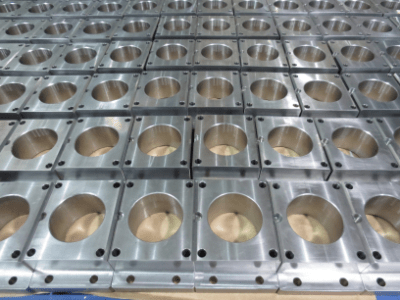
vacuum chamber is a vacuum environment container used for manufacturing semiconductor chips in semiconductor equipment. Its main function is to provide a stable vacuum environment for semiconductor processing. In semiconductor manufacturing, many processes need to be performed in a vacuum or extremely lower pressure environment because impurities such as oxygen, water vapor, and dust in the air can negatively affect semiconductor devices. Therefore, vacuum cavity is widely used in semiconductor equipment, such as photolithography machine, film deposition equipment, ion implantation equipment, etc. In these devices, vacuum cavity plays a key role, and its stability and precision have an important impact on the manufacturing and performance of semiconductor devices.
Manufacturing process of vacuum chamber
1. Design and manufacture
The manufacture of vacuum chamber is a highly technical process, which requires strict design and manufacture. In the manufacturing process, the selection of materials, the size of the cavity and the requirement of vacuum degree should be taken into account. Different materials have different characteristics. When selecting vacuum chamber materials, it is necessary to consider their physical and chemical characteristics, such as thermal expansion coefficient, thermal conductivity, chemical stability and other factors. Commonly used materials include stainless steel, aluminum alloy, titanium alloy, etc. These materials have good mechanical properties, corrosion resistance and thermal conductivity, and are not easy to oxidize or release gases in a vacuum environment. For semiconductor devices with special requirements, such as high-frequency microwave devices and optoelectronic devices, ceramic materials or semiconductor materials can also be selected.
2. Cleaning and disposal
Before the vacuum chamber is manufactured, the material needs to be cleaned and treated to ensure the surface purity and smoothness of the chamber. Special solutions and tools are used during cleaning and handling.
3. Processing technology
In terms of processing technology, attention should be paid to the surface treatment of the cavity to avoid defects that affect its performance. The surface is usually treated by machining, electric discharge machining, laser machining, chemical corrosion and other methods. In addition, in order to avoid impurity contamination, it is necessary to take strict cleaning measures during the processing.
3. Welding and assembly
After cleaning and treatment, the parts need to be welded and assembled. Temperature and pressure control should be taken care of during welding and assembly to avoid material deformation and air leakage.
4. Check and test
After manufacturing, the vacuum chamber needs to be inspected and tested. The main detection methods include visual inspection, leakage test, internal cleanliness test and other methods. The inspection items include vacuum degree, tightness, leakage rate and so on. High precision testing equipment and instruments are required in the testing process.
summarize
Making a stable vacuum cavity is an important step in the manufacturing process of semiconductor equipment. Only through scientific design, fine manufacturing, strict cleaning and treatment, precise welding and assembly, and accurate inspection and testing, can we ensure the quality and stability of semiconductor equipment.
